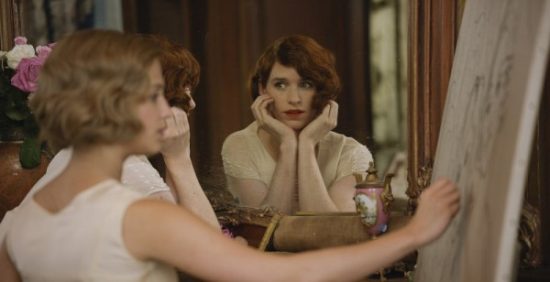TIFF 2015 Review: The Danish Girl
The opening scenes of The Danish Girl are so beautiful that you can literally feel Oscar gold oozing from its pores. It sets the tone for the rest of the film, which turns into a stunning, yet heartbreaking story, that in the current landscape is especially poignant. What makes it even more remarkable is that it is based on a true story.
Set in Copenhagen in 1926, Eddie Redmayne plays Einar Wegener, a renowned landscape artist, revered by his colleagues and loved by his friends. But his greatest love is his wife Gerda (Alicia Vikander). An artist herself, Gerda doesn’t seem to mind basking in her husband’s glory. Their relationship is romantic, it’s supportive, it’s fun. There are moments with their little dog riding through parks, holding hands, laughing – it is that idealistic happiness that everyone strives for.
However, Einar is about to make a discovery of self that will unsettle all of that. What starts as a wife asking for her husband to help her with a portrait ends with a rush of repressed desire and emotion. At Gerda’s request Einar dons a pair of stockings and shoes, clutches a dress to his chest and feels alive, something he hasn’t felt for a long time. The friend he is sitting in for, Oola (Amber Heard), names his alter-ego Lili. Finding much needed inspiration in painting her, Gerda encourages Einar’s dressing in women’s clothing, helping him pick out a wig from the theatre where Oola dances and teaching him make-up application.
In order to get Einar to go with her to a party, Gerda suggests that Lili make a public debut – that it would be fun. To her it is still a game – until she witnesses a kiss between Lili and a man named Henrik (Ben Whishaw). Gerda tells Einar that Lili must now stay away, but Einar can’t turn his feelings away. He has an uncontrollable want and need to feel alive again and to be Lili. With an eventually supportive Gerda by his side, Einar is determined to become the woman he feels that he was born to be.
Director Tom Hooper, Academy Award winner for The King’s Speech, may find himself again with awards season buzz here. He re-teams with cinematographer Danny Cohen (who has worked with Hooper on Speech as well as Les Miserables) and the result is a stunning sequence of perfectly lit and balanced scenes, wonderfully choreographed and planned. The close ups of Gerda unlacing her boots, the touch and feel of fabrics, even their sounds, make Einar’s needs palpable to the audience. Hooper approaches his subject matter with great sensitivity, even if that leaves the film feeling a little bit safe. However, it’s still safe with passion behind it.
Director Tom Hooper, Academy Award winner for The King’s Speech, may find himself again with awards season buzz here. He re-teams with cinematographer Danny Cohen (who has worked with Hooper on Speech as well as Les Miserables) and the result is a stunning sequence of perfectly lit and balanced scenes, wonderfully choreographed and planned. The close ups of Gerda unlacing her boots, the touch and feel of fabrics, even their sounds, make Einar’s needs palpable to the audience. Hooper approaches his subject matter with great sensitivity, even if that leaves the film feeling a little bit safe. However, it’s still safe with passion behind it.
As for Redmayne, the question here isn’t whether or not his role as Einar/Lili will garner him another Academy Award nomination on the back of last year’s win (for The Theory of Everything), but it’s whether or not he will win again. His performance is brave and nuanced, emotional and heart wrenchingly good. He is matched in effort by Alicia Vikander, who really dazzled this past year in Ex-Machina. Far from playing her emotionally void robot from that film, Vikander has opportunity let loose here, resulting in a commanding and arresting performance.
The transition of Einar to Lili and the notes the real life Lili kept in her journal were the basis of a 1933 book ‘Man into Woman’. Her courageous story is tragic, and at a time where transgender equality is part of the political and societal landscape, it’s one that needs to be told. The moment that Einar truly embraces Lili is a beautiful one. After her gender reassignment surgery, believed to be the first ever performed, Lili says that she finally truly feels like herself. If only she had the chance to flourish freely for longer. At least her story can live on.










